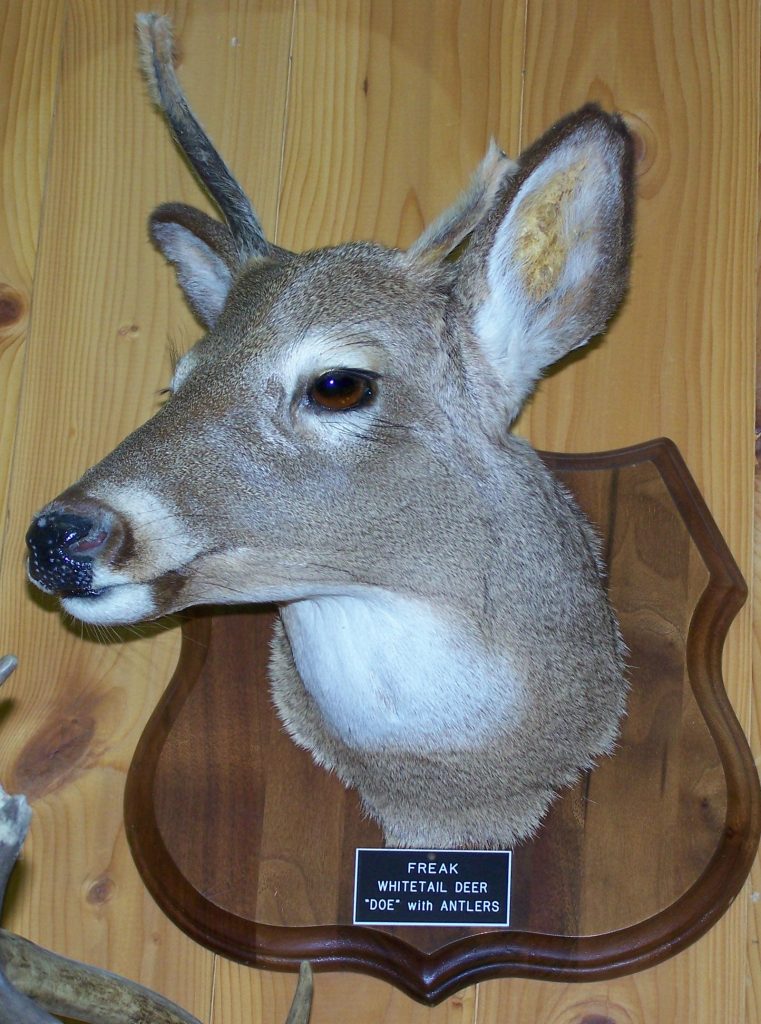How common are antlered does in the whitetail society? Unlikely. Yet, we hear of reports each year during gun season where hunters shoot large-bodied, antlered deer that are reported as females. In the scientific sense, these deer are not does but rather weird genetic freaks.

As reported numerous times in Deer & Deer Hunting, deer that appear to be antlered females typically fall into one of five categories of hermaphrodites (deer exhibiting traits of both male and female). True antlered does do not possess the required testosterone to grow branched antlers that harden. Hence, true antlered does will grow weird-shaped “antlers” that are always covered in velvet. These deer more commonly carry velvet-covered antlers lacking a cornet.
According to esteemed deer researcher John J. Ozoga, such a condition hints that pedicle and antler growth occurred as one continuous process. Even the permanently attached, velvet-covered antlers of does might change size and shape. Freezing during winter sometimes causes the tips to break off, but regrowth the next summer might add length or change the antler’s configuration.
According to scientific research, the average “antlered doe” exhibits velvet-clad growths that do not exceed 9-1/2 inches in length. The odds of an adult white-tailed doe growing antlers is about .104 percent. The most comprehensive study on the occurrence of antlered does in a free-ranging population was conducted in Michigan. In that study, researchers examined 8,605 adult white-tailed does over a three-year period and found nine that were true antlered does.
What about that 220-pound, 10-point “antlered doe” that the local TV station showed during your gun season? It’s not a true doe. Chances are it falls into one of the following categories:
- True hermaphrodite. This deer would have both male and female organs, but the male organs are faint and/or not outwardly identifiable.
- Pseudohermaphrodite (also know as cryptorchid). This deer would have internal male organs that would not be easily identifiable.
Three other scenarios exist, including does with degenerated ovaries from old age; does with diseased ovaries; and a final class in which the deer has no recognizable pathology. These cases are extremely rare and are not present in the larger, branch-antlered deer normally reported as antlered does.
In summary, the hardened, branch-antlered deer reported as “antlered does” each year are most likely hermaphrodites.
+++++
Learn How to Kill Big Bucks Solidly grounded in Bartylla’s wealth of experience, this buck hunting guide seeks to help real-world hunters take their craft to the next level. Chapters in his super book “Big Buck Secrets” include comprehensive instruction on everything from scouting new hunting areas to calling strategies, hunting during the rut, understanding mature buck behavior, aggressive and creative techniques, and more. Get your copy today!






![Air gun 101: The differences between .177 & .22 – Which jobs they do best ? [Infographic]](https://airgunmaniac.com/wp-content/uploads/2020/09/g44-218x150.jpg)






































![Air gun 101: The differences between .177 & .22 – Which jobs they do best ? [Infographic]](https://airgunmaniac.com/wp-content/uploads/2020/09/g44-150x150.jpg)

